|
|
 |
|
|
Rommel: The Rise of the Desert Fox
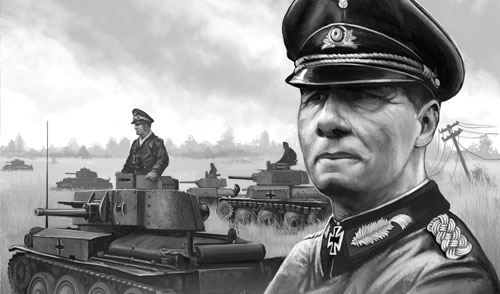 |
Rommel:
The Rise of the Desert Fox
by Phil Yates
Rommel hit the world’s headlines as ‘The Desert Fox’ in 1941 when he and his Deutsches Afrikakorps ran rings around the British in the deserts of Libya. His renown grew in the following year when his Panzerarmee Afrika
threw the British back to El Alamein and nearly won the war in the desert, and then in 1943 when he smashed the Americans at Kasserine Pass. |
His meteoric rise continued in 1944 when he commanded Heeresgruppe B defending Normandy against the Allied D-Day invasion. In just three years Rommel
rose from being a colonel commanding a battalion to Germany’s youngest
field marshal commanding an army, and two years later an army group.
Learn more about Rommel in Flames Of War here...
As a young man, no one would have predicted Erwin Rommel’s outstanding success. When Rommel built and flew
his own glider at the age of 15, he hoped for a career in aircraft design, but his father convinced him to join the army instead. So, in 1910, Rommel joined the 124th Württemberg Infantry Regiment as a cadet, gaining his commission as a Leutnant (and a fashionable monocle) two years later at the age of 18. When the First World War began in 1914, Rommel was as excited as his men at the thought of going into action.
His first battle was northeast of Verdun three weeks into the war. While on reconnaissance Rommel spotted more
than a dozen French soldiers resting. In the style that would later make him famous, Rommel attacked with just
the three soldiers he had with him, not waiting for the rest of the platoon to catch up. By the end of the year he was the battalion’s adjutant officer, taking on whatever tasks his commanding officer set him. Unsurprisingly given his undoubted bravery and aggressive approach, he earned an Iron Cross, Second Class, but was badly wounded
in the process. Discharging himself from hospital, he returned to his battalion as a company commander to find that trench warfare had taken hold.
|
 |
Early in 1915, Rommel was invited by a
neighbouring battalion to ‘join in the fun’ in a diversionary attack. In
another move typical of his later actions, Rommel agreed, and without
consulting his own commander, led his men into the attack. Finding
himself stranded ahead of the other attacking companies, Rommel elected
to cover his withdrawal by doing what the enemy least expected,
attacking even deeper into their positions.
After routing the enemy threatening his withdrawal, Rommel led his company back to their trenches with only a
handful of casualties. Rather than a rebuke for dashing off to fight his own private battle, Rommel received the first Iron Cross, First Class, awarded to his regiment.
After spending most of 1915 in the trenches, Rommel was selected to help form the elite Württemberg Mountain Battalion. He spent most of 1916 and 1917 alternating between fighting the French in the mountains on the Swiss
border and fighting the Romanians in Transylvania, before being transferred to the Italian front in October 1917. There Rommel earned the German Army’s highest award, the Pour le Mérite, for breaking the Italian positions wide open in the Battle of Caporetto.
|
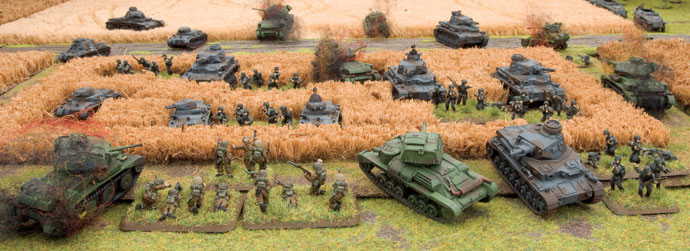 |
Once again Rommel ignored both his orders and the security of his flanks as he pushed ever deeper into the Italian defences. Finding and attacking weak spots in the enemy line, Rommel advanced without pause. In three days fighting his four companies advanced 30 miles (50km) through the Italian lines capturing some 9000 men! After this dramatic exploit Rommel was, much to his disgust, recalled to a staff position for the remainder of the war.
The period between the wars was generally a quiet one for Rommel. His career alternated between commanding
first a company, then a battalion and instructing at military academies. He was selected to organise security for
Adolf Hitler on several occasions, and when Hitler decided to invade Poland he asked for Rommel as the commander
of his personal security battalion and train, which, interestingly enough, was named Amerika. The new role included a promotion to colonel for Rommel.
The Plan to invade Poland was known as Case White. It involved five German armies making concentric encircling
attacks to trap the Polish forces west of Warsaw. After several delays (usually accompanied by false starts when various German units failed to get the order to wait and invaded anyway!), Hitler finally gave the order to implement Case White at 4:45 am on 1 September 1939.
|
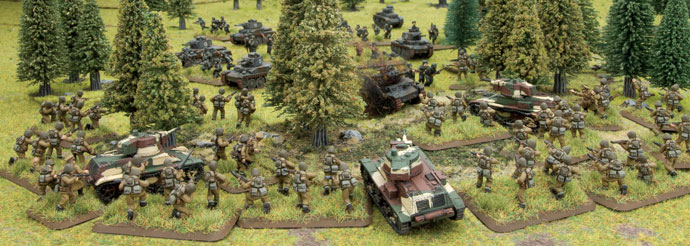 |
Outnumbered two to one in soldiers and ten to one in tanks and aircraft, the Polish forces lost the battle for their borders in less than three days. Hitler was elated and insisted on visiting the front lines. On 4 September Amerika left Berlin for the Fourth Army front. Hitler, accompanied by Rommel, toured the front lines in his famous six-wheeled Mercedes-Benz car, talking to his victorious soldiers. There he found Poland’s armies in retreat.
To make matters worse for the Poles, the Soviet Union seeing the German successes invaded eastern Poland on 17 September to secure the areas Germany had promised it in secret clauses in the Molotov-Ribbentropp Pact. This second invasion sealed Poland’s fate, even while the biggest battles of the campaign were still being fought.
By the time Amerika reached Danzig on 18 September, the Poznań and Pomorze Armies had been encircled on the Bzura River just west of Warsaw, and were fighting for their existence. While several divisions managed to break through to Warsaw, 120,000 troops surrendered on 21 September after a week of hard fighting. At the same time the biggest tank battle of the campaign took place at Tomaszów-Lubelski when Polish mechanised forces lead the Kraków
Army’s attempt to break out of another encirclement towards Lvov.
|
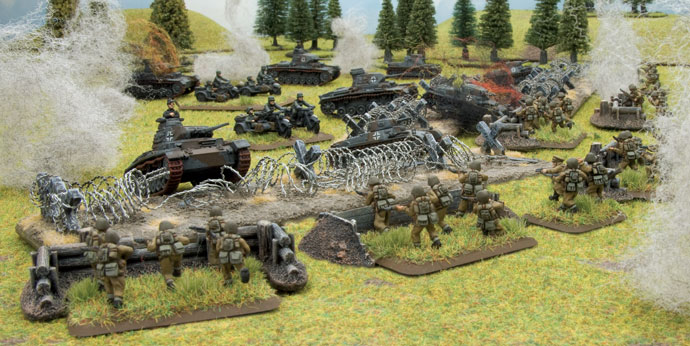 |
Freed from the Bzura battles, the Germans turned to the task of capturing Warsaw. After an unsuccessful attack on
23 September, the Luftwaffe (German Air Force) bombed Warsaw with 1200 aircraft on 25 August, preparing the way for the second major assault on the Polish defences. Hitler, believing the campaign effectively over, returned
to Berlin. Despite Hitler’s optimism, it took another three days of hard fighting to subdue the battered defenders of the Polish capital. The remnants of the Polish Army fought on until 6 October.
The campaign had been an outstanding success, but the cost had been high. After heavy losses in men and equipment, the German war machine was in no state to take on France and the world’s most powerful army. Fortunately France and Britain were in no state to fight either.
As part of Germany’s preparations for the next phase of the war, the four ‘light’ divisions were converted to full panzer divisions. When asked by Hitler what he would like as his next assignment, Rommel asked to command one of these new panzer divisions. Despite opposition from the army personnel branch, Rommel after all had never been in a tank, let alone commanded a division, Hitler had his way and in February 1940, the newly Promoted Generalmajor Rommel took command of the 7th Panzer Division for the invasion of France.
|
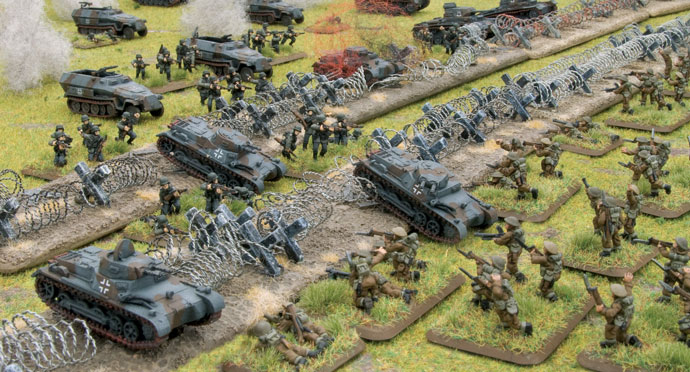 |
The German plan for the invasion of France, Case Yellow, was a masterpiece of deception. In the first phase an army group would invade Belgium and the The Netherlands, drawing the British and French mobile troops north, then in the second phase another army group containing seven armoured divisions would sweep through the Ardennes
region (generally considered impassable to armour) and strike for the English Channel cutting off the entire British and French mobile forces.
At 5:35 am, 10 May 1940, the German attack opened, preceded by parachute landings on critical fortifications and
bridges. Rommel’s division crossed the border and pressed on towards the Meuse River in Belgium. By nightfall
on 12 May, they had advanced 50 miles (80km) against light opposition from French and Belgian troops, reaching the main defences on the Meuse at Dinant.
The first attempts to make a hasty crossing failed, but maintaining pressure along the whole line allowed the
Germans to force crossings on 13 May, despite heavy fire from the French defenders.
Throughout 13 May Rommel was on the move, pushing his infantry on, organising artillery fire, ordering buildings
to be torched to provide a smoke screen and moving his tanks right up to the river bank to provide covering fire.
His division took nearly 300 casualties and lost a number of tanks during the crossing, but in typical Rommel style pushed on through the defences before the French could make a coordinated counterattack.
|
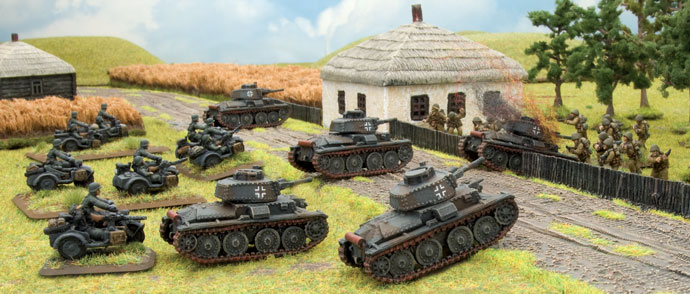 |
Over the next three days Rommel pushed on to the fortified Maginot Line protecting France’s borders. Breaking
through an uncompleted sector in an afternoon’s fighting, Rommel continued his breakneck advance into France.
Rommel was always at the front, usually in a Panzer 38(t) tank borrowed from his panzer regiment. Despite numerous close calls, his luck held and he survived with nothing more than superficial wounds. His reckless advance astounded the Allied commanders and resulted in his own commanders demanding that he halt and wait for the infantry to catch up and protect his flanks. Rommel ignored them. His division raced on, far ahead of its positions on the maps of friend and foe alike, earning it the nickname ‘The Ghost Division’.
On 20 May, the 2nd Panzer Division reached the coast at Abbeville cutting off the French and British armies. That
same day Rommel’s 7th Panzer Division reached the British command centre at Arras. The British and French were so
disorientated by the speed of the German advance that they did not yet realise that they were cut off, and thought that there were only weak German forces in the area.
The British reacted by ordering their 50th ‘Tyne and Tees’ Motor Division to extend the front line south as far as Arras and sending 1st Armoured Brigade out to clear the area south of Arras, sparking the Battle of Arras. This counterattack caught Rommel by surprise, but by nightfall he was back in control.
|
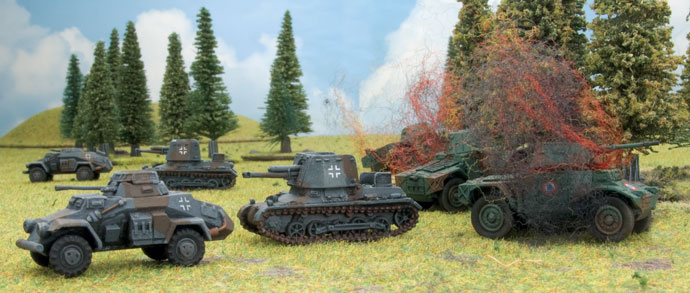 |
Want To Know More About Blitzkrieg?
Over the past few months we have added a massive range of articles
about Blitzkrieg to the website, to make it easier for people to find a
specific article we have put together this handy place.
Find out more about Blitzkrieg and Early-war here... |
Last Updated On Friday, February 11, 2011 by Blake at Battlefront
|
|
|